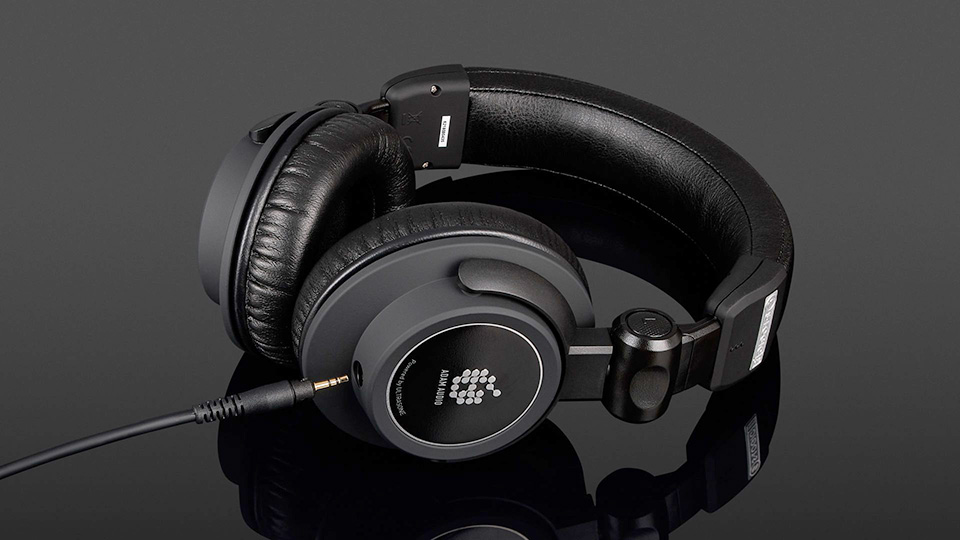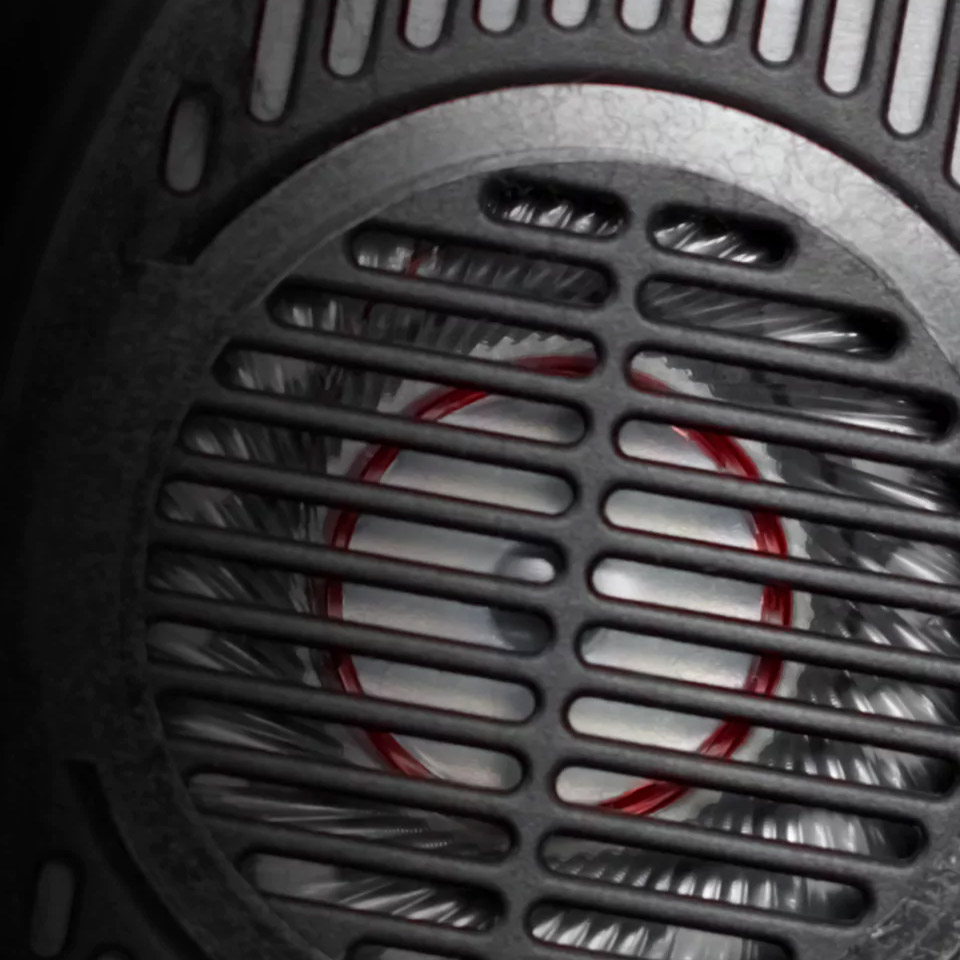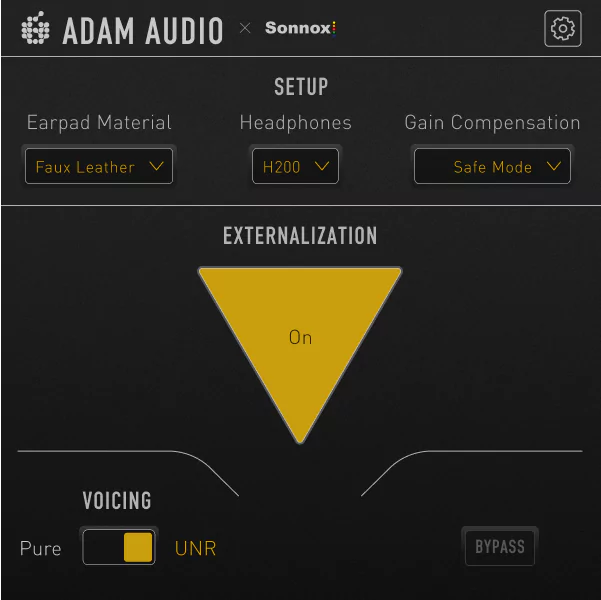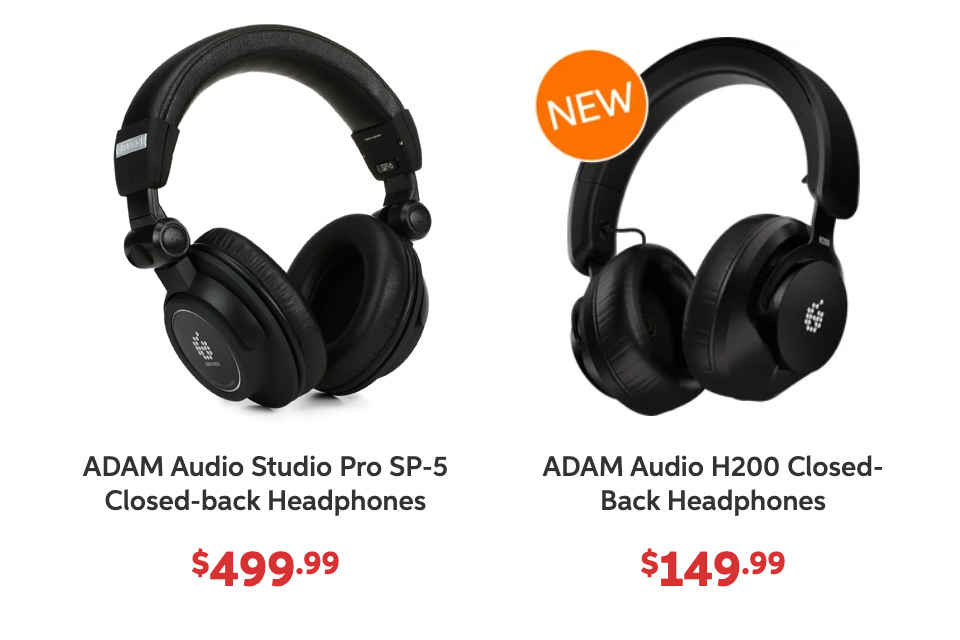
ADAM Audio H200 - Budget Soft/hardware Integrated Headphones for Everyone?
Share this article
The world of headphones hasn't seen a radical shake-up since Eugen Beyer invented the dynamic driver back in 1937. Sure, we've seen incremental improvements - comfier designs, lighter and stiffer diaphragms, stronger magnets, and lower impedance for easier driving. Thanks to Chinese manufacturing, we've even managed to keep costs down without sacrificing quality.
But the core tech? Pretty much the same.
Now, you might think wireless earbuds are all the rage, but pro audio folks? They're not buying it. Music producers can't stomach the 20ms+ latency or the hassle of daily charging. What they're really after is the heart of monitoring: accuracy.
Surprisingly, the big names in pro audio - your Sennheisers, Beyerdynamics, and AKGs - kind of missed the boat on this one. That's why we've seen a whole market pop up around headphone calibration software. The demand is so intense that there are already five major players in the pro space, not to mention the sea of consumer-grade options.
But here's where things get interesting.
The studio monitor crowd has finally decided to crash the headphone party, and they're shaking things up. Just last month, we saw Genelec drop the 8550A. And now, another player has thrown their hat into the ring. Obviously, they couldn't have known about Genelec's plans, but get this,
according to their official video, these ADAM H200 headphones have been in the works for a solid five years already.
Official Website: https://www.adam-audio.com/headphones/h200/
Remember ADAM's first foray into headphones with the SP-5? I bet some of you old-timers do.
I've got a hunch that ADAM had plans for an "SP-3" or maybe even an "SP-7" in the pipeline. But the fact is - the SP-5 has been discontinued. Why, you ask? Well, word on the street is that their manufacturing partner, Ultrasone, have some signs of change in their business.
Since early 2024, Ultrasone's Facebook page has stopped all product and activity promotions. And if you try to hit up their long-standing website at Ultrasone.com, you get bounced to some all-German site. It is highly likely that the company has already been sold.
It's a bit of a plot twist in the audio world, isn't it? Goes to show how even the big players can get caught up in industry shake-ups.

Now, let's get back to this new H200 model.
First off, the looks - they've gone for a sleeker vibe this time around. If you've seen the AIAIAI modular headphones we reviewed a while back, you might catch a bit of resemblance. But the real kicker? They've beefed up both the ear pads and the headband cushion. My guess? These newcomers are gonna be a whole lot comfier to wear than the old SP-5.
Looks like ADAM's been taking notes on user comfort.

Alright, let's dive into the nitty-gritty of the H200.
First up, they've stuck with a closed-back design. We're looking at some 40mm drivers with a 32Ω impedance.
The diaphragm is made of PEEK (that's Polyether Ether Ketone for you science buffs). It's tough enough to replace metal in lightweight bearings and gears.
The frequency response is where ADAM's really showing off. They're claiming a range of 2Hz to 23kHz, with a limit of -3dB. Now, I don't know about you, but I can't remember the last time I saw a headphone manufacturer specify their measurement limits. Usually, they keep that under wraps.
To be honest, without this measurement limits, most speaker manufacturers would just call it "frequency range" rather than "frequency response".
They've even gone the extra mile with the max SPL (Sound Pressure Level). It's listed at 112.5dB, and they've even specified the test conditions: @1kHz + 0.04% THD. That's another first time seen for me in the headphone world. Even many speaker manufacturers don't go this in-depth. It's no wonder SPL is considered the biggest mystery in the speaker industry by those in the know.
Last but not least, sensitivity. We're looking at 97.5dB/mW, which basically means you can drive these straight from your phone without breaking a sweat. It's clear ADAM's keeping up with the trends here.

Alright, so far the H200 might seem like just another typical monitor headphone. But here's where things get really interesting - it's the companion software that sets it apart.
Here comes the ADAM Headphone Utility.
We have noticed this unique plugin was jointly developed by ADAM and Sonnox. For those not in the know, Sonnox is a big deal in the plugin world. Audio pros trust these guys. Back in 2022, ADAM's parent company, Focusrite, scooped them up. So now they're all one big happy audio family.
This plugin is packed with options. Let's break it down:
First up, you've got Earpad Material settings. It's pretty clever - leather pads tend to seal better, boosting the bass, while velour lets some sound escape, reducing it. Personally, I'm a velour fan, but heads up - ADAM says you'll need to buy velour pads separately.
Then there's the Pure/UNR setting (aka. Voicings). Think of it as "OEM EQ". If you've played with ADAM speakers before, you'll recognize this. "Pure" is for when you want accuracy, "UNR" is when you want it to sound good. Sometimes they're not the same thing, right?
And here's another trick - a setting called "Externalization". Now, this is a new one for me. According to ADAM on their website, it's similar to "Crossfeed" tech from Sound Performance Lab (SPL). If you caught our SPL Phonitor 3 video review released last month, you'll know what I'm talking about.
In short, The goal of it is to make your headphones sound more like speakers.

Alright, let's address the elephant in the room. The H200 isn't perfect:
- No fancy-pants detailed EQ interface to play with
- Plugin version only for ADAM Headphone Utility (yep, no standalone app for now, folks)
- Velour earpads are separate buys.
But once you see the price tag, you shall feel relieved.
The official selling price of the H200 is only $149, which is a whopping $300 cheaper than the SP-5.
Now, if you're the type who demands the cream of the crop, sure, go ahead and splash out on the Genelec 8550A or pair a AKG K872 with a SoundID calibration setup. No judgment here.
But here's the real deal: The H200 isn't trying to be the holy grail of headphones. Its true magic lies in its accessibility. This is the most attainable "soft/hardware integrated" monitoring headphone for a whole bunch of cash-strapped musicians and audiophiles out there.

